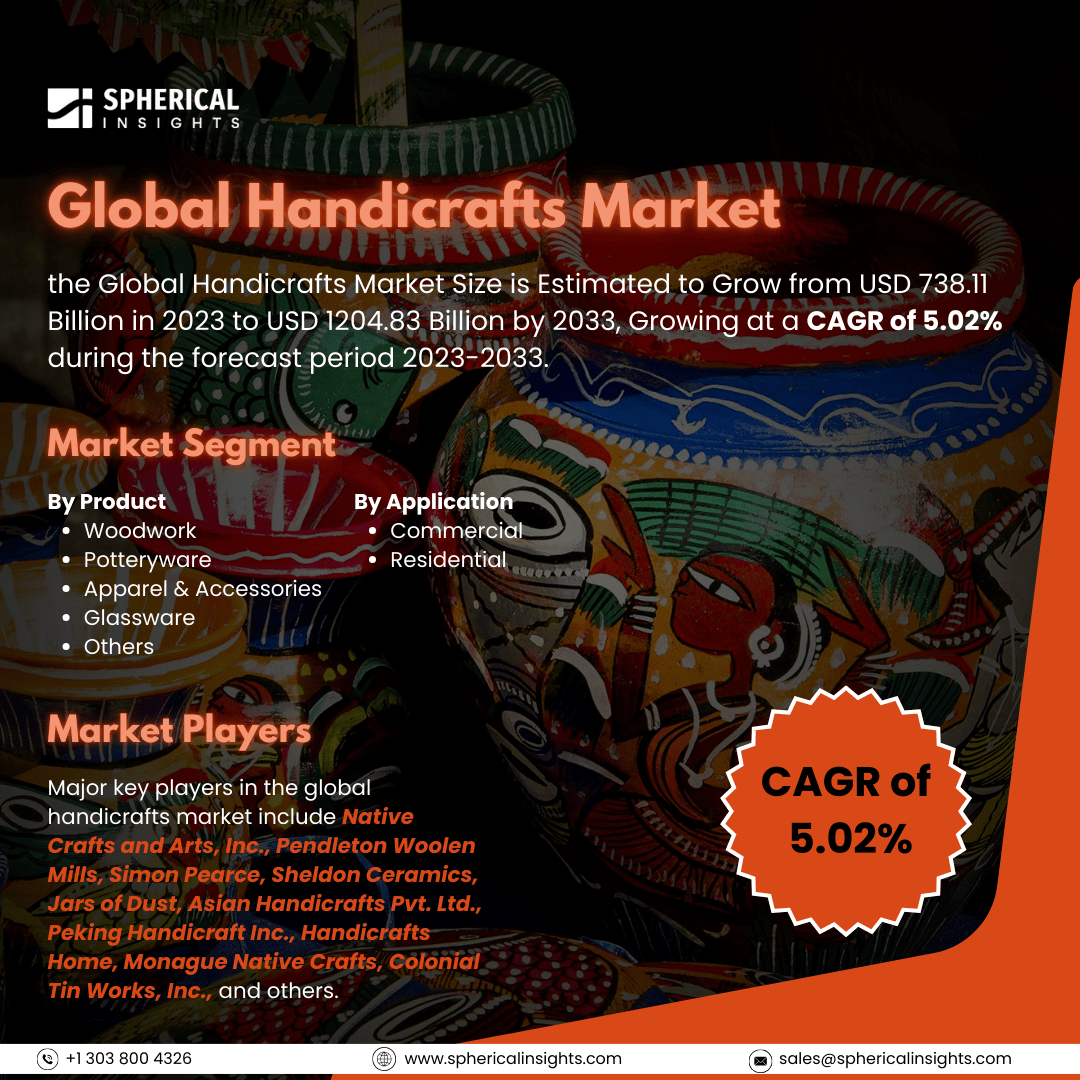Global Automotive Brake Components Market Size to Exceed USD 76.12 Billion by 2033
According to a research report published by Spherical Insights & Consulting, the Global Automotive Brake Components Market Size is Expected to Grow from USD 50.08 Billion in 2023 to USD 76.12 Billion by 2033, at a CAGR of 4.28% during the forecast period 2023-2033.
Browse 210 market data Tables and 45 Figures spread through 190 Pages and in-depth TOC on the Global Automotive Brake Components Market Size, Share, and COVID-19 Impact Analysis, By Vehicle Type (Passenger Car, Light Commercial Vehicle, and Medium & Heavy Commercial Vehicle), By Product Type (Disc Brakes and Drum Brakes), and By Region (North America, Europe, Asia-Pacific, Latin America, Middle East, and Africa), Analysis and Forecast 2023 – 2033
The global market for automotive brake components includes a range of parts that are necessary for vehicle performance and safety, including disc brakes, drum brakes, and electronic system such as ESC (Electronic Stability Control) and ABS (Anti-lock Braking System). The automotive industry is now able to design and manufacture efficient braking components thanks to technological advancements, growing adoption of generative braking and ABS, and improved manufacturing capabilities. This has increased vehicle production worldwide and is driving the global automotive brake components market. The market is comprehensively assessed in the global automotive brake components market study. The research provides a thorough examination of the market's major segments, trends, drivers, constraints, competitive environment, and significant factors. Additionally, the need for passive and active safety systems in cars is expected to rise, which will impact the automotive brake system market. Growing concern about traffic accidents and the rising death toll has convinced the main stakeholders to include strong safety elements. The market for car brake systems will keep growing as a result of strict safety regulations enforced by governments and regulatory bodies. However, the global automotive brake components market is expected to grow more slowly due to the large capital investment needed to commercialize novel braking technologies.
The passenger car segment held the highest share in 2023 and is anticipated to grow at a significant CAGR during the projected timeframe.
Based on vehicle type, the global automotive brake components market is categorized as passenger car, light commercial vehicle, and medium & heavy commercial vehicle. Among these, the passenger car segment held the highest share in 2023 and is anticipated to grow at a significant CAGR during the projected timeframe. This is because of the quick rise in the use of safety features in passenger cars and the growing need for brake systems, which help drivers prevent collisions when combined with other active and passive safety features.
The disc brakes segment held the highest share in 2023 and is anticipated to grow at a significant CAGR during the projected timeframe.
Based on the product type, the global automotive brake components market is categorized as disc brakes and drum brakes. Among these, the disc brakes segment held the highest share in 2023 and is anticipated to grow at a significant CAGR during the projected timeframe. Disc brakes are more appealing than drum brake systems, which require frequent replacements, this is because they use lubricants to ensure the components operate efficiently and effectively. The use of traditional braking methods is being impacted by the enormous growth of disc brakes.
North America is projected to hold the largest share of the global automotive brake components market over the forecast period.
North America is projected to hold the largest share of the global automotive brake components market over the forecast period. The region's filtration-related emission standards are more stringent. Furthermore, major producers of automobile braking systems are concentrating on entering untapped and undiscovered vehicle markets. Additionally, they are concentrating on launching cutting-edge car brake parts to increase their market share, customer base, and profit margins.
Asia Pacific is expected to grow at the fastest CAGR growth of the global automotive brake components market during the forecast period. IFirms in the region can offer substantial cost reductions because of the availability of inexpensive labor and raw materials. China and India, which combined accounted for more than 34% of the world's vehicle output in 2023, are also included in this region. The growing acceptance of active braking systems and the rise in sales of luxury and high-end cars are anticipated to propel the market.
Competitive Analysis
Major vendors in the global automotive brake components market are Robert Bosch GmbH, ZF Friedrichshafen AG, Continental AG, Aisin Seiki Co., Ltd., Knorr-Bremse AG, Brembo S.p.A., Hitachi Astemo Ltd., Mando Corporation, Haldex AB, Akebono Brake Corporation, Federal-Mogul Holdings LLC, and others.
Key Target Audience
- Market Players
- Investors
- End-users
- Government Authorities
- Consulting and Research Firm
- Venture capitalists
- Value-Added Resellers (VARs)
Key Market Developments
- In March 2022, ZF Friedrichshafen AG introduced an electronic park brake that allows automakers to modify the interior and install cutting-edge braking systems in compact cars.
Market Segment
This study forecasts revenue at global, regional, and country levels from 2020 to 2033. Spherical Insights has segmented the global automotive brake components market based on the below-mentioned segments:
Global Automotive Brake Components Market, By Vehicle Type
- Passenger Car
- Light Commercial Vehicle
- Medium & Heavy Commercial Vehicle
Global Automotive Brake Components Market, By Product Type
Global Automotive Brake Components Market, By Regional
- North America
- Europe
- Germany
- UK
- France
- Italy
- Spain
- Russia
- Rest of Europe
- Asia Pacific
- China
- Japan
- India
- South Korea
- Australia
- Rest of Asia Pacific
- South America
- Brazil
- Argentina
- Rest of South America
- Middle East & Africa
- UAE
- Saudi Arabia
- Qatar
- South Africa
- Rest of the Middle East & Africa



